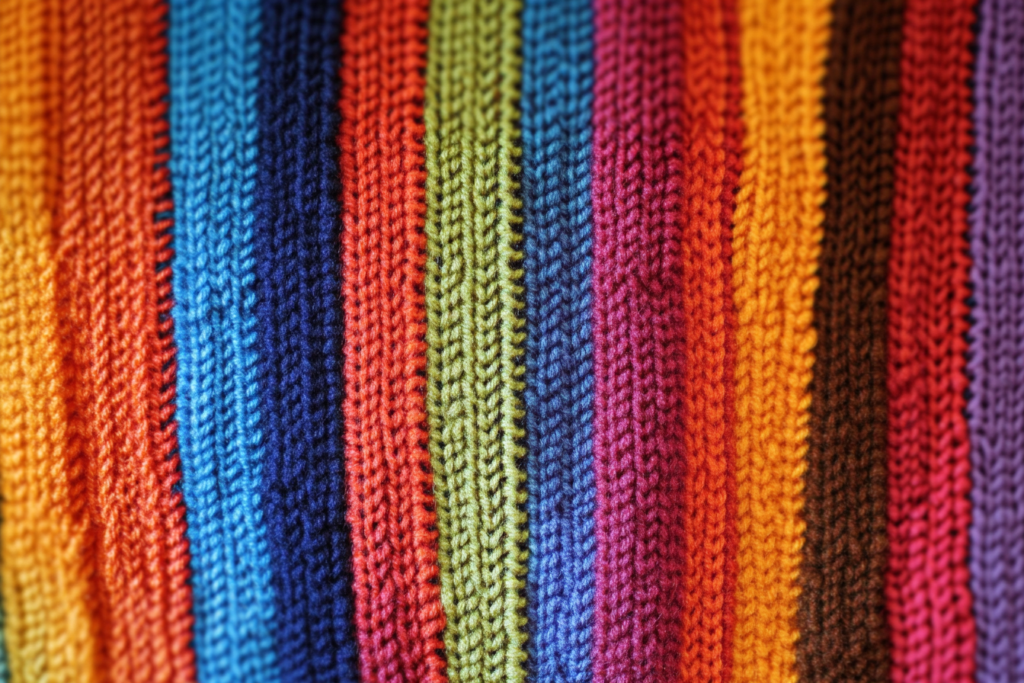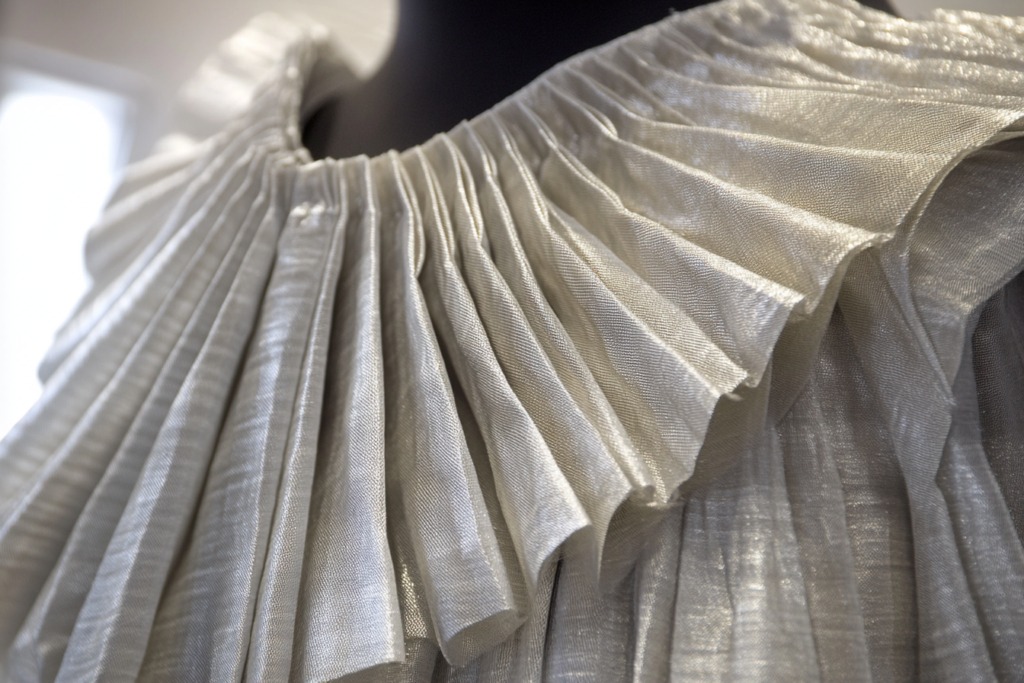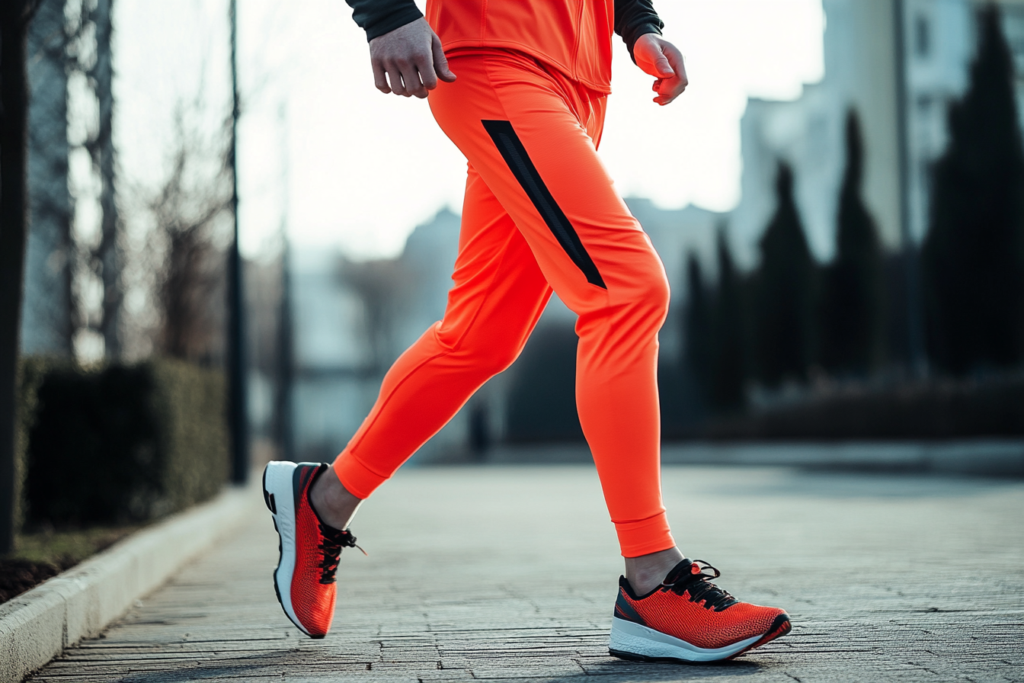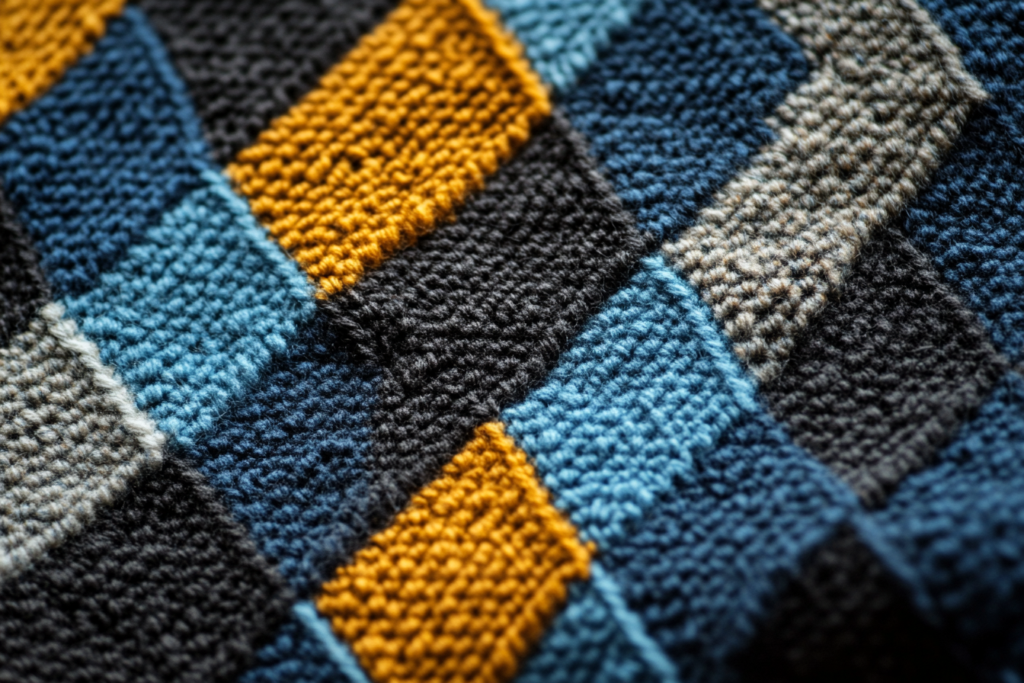Wales: The Vertical Lines in Knitted Fabrics
Meta Description: Wales refer to the vertical lines in knitted fabrics. Learn how wales influence the texture, structure, and stretchability of knit textiles.
What are Wales in Knitted Fabrics?
In knitted fabrics, wales are the vertical lines that appear due to the arrangement of loops created by the yarns. Each wale represents a column of loops that run from top to bottom in the fabric. These vertical lines form as a result of the way the knitting machine interlocks the yarns to create the fabric.
The term wale is especially relevant in the context of ribbed knitting, jersey, and other knit patterns, where the arrangement and number of wales influence the texture and stretchability of the fabric. A higher number of wales often results in a denser, more compact fabric, while a lower number of wales can create a looser, more open weave.
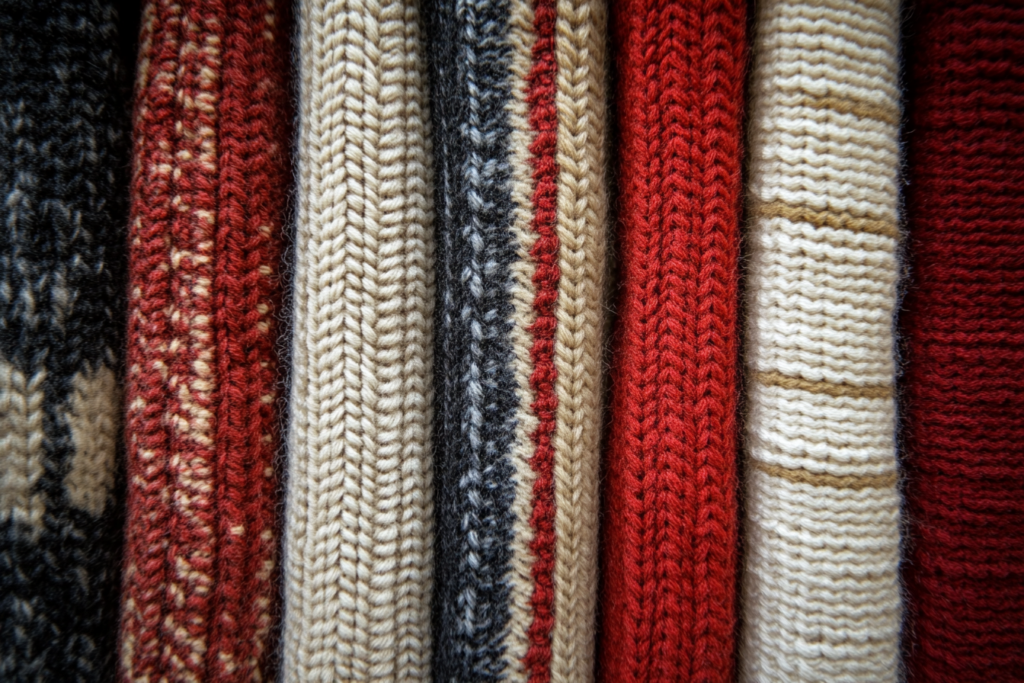
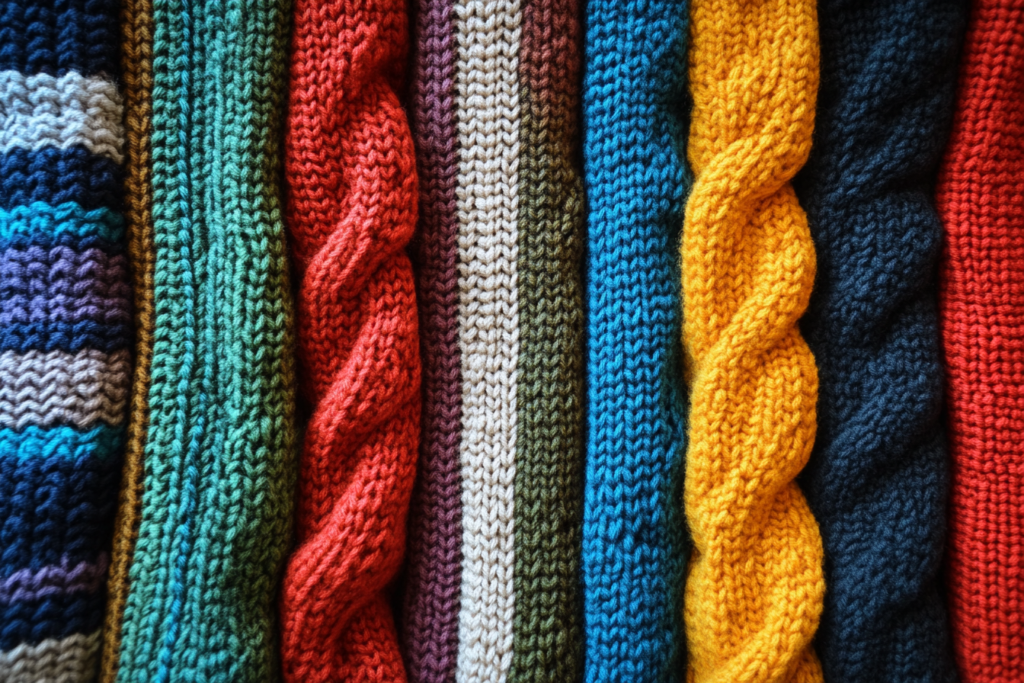
How Do Wales Form in Knitted Fabrics?
📌 Loop Formation
- In knitting, each loop (also called a stitch) is formed by the yarn as it is interlocked with other loops. The arrangement of these loops creates the wale structure. In circular knitting machines, the yarn loops are continuously formed and interlocked, creating the fabric’s texture and its vertical lines.
📌 Wales in Different Knit Fabrics
- Jersey Knits: In jersey knit fabrics, wales appear as fine vertical lines on the right side of the fabric, while the purl side (back) has a different texture.
- Ribbed Knits: Ribbed knits, such as 1×1 rib or 2×2 rib, feature pronounced wales on both sides of the fabric. The wales alternate with purl columns, creating a stretchy, elastic fabric.
- Pique and Interlock Knits: These fabrics have wales running vertically, but the structure is typically more dense and solid, resulting in a more substantial fabric.
Importance of Wales in Knit Fabrics
📌 Stretch and Flexibility
- Wales are essential for creating the stretchability of knitted fabrics. The arrangement of the loops in the vertical direction allows the fabric to stretch and move in response to body movement, which is why knitted fabrics are often used in activewear, t-shirts, and sweaters.
📌 Fabric Texture and Appearance
- The number of wales affects the texture and feel of the fabric. A tight wale structure can lead to a smooth, dense fabric, while a looser wale structure may create a lighter, airier feel.
📌 Durability and Comfort
- The number of wales in a fabric also contributes to its durability and comfort. Fabrics with fewer wales tend to be softer and more flexible, while those with more wales may offer greater strength and resilience.
Applications of Wales in Knitted Fabrics
📌 Apparel
- Jersey knits (with fine wales) are commonly used for t-shirts, dresses, and activewear due to their comfort and flexibility.
- Ribbed knits (with more pronounced wales) are popular for sweaters, cuffs, necklines, and waistbands, as they provide stretch and shape retention.
📌 Home Textiles
- Knitted fabrics with wales are also used in home textiles such as blankets, bedding, and upholstery. The stretch and resilience of fabrics with wales make them ideal for use in products requiring both softness and strength.
📌 Sportswear and Outerwear
- Knits with defined wales are found in sportswear, outdoor jackets, and performance fabrics. These fabrics need to provide flexibility and movement while maintaining durability and comfort.
Illustration of Wales in Knitted Fabrics
Below is an illustration showing the structure of knitted fabric, highlighting the wales (vertical lines) and their formation through the interlocking loops of yarn. This will help you understand how wales influence the texture and stretchability of the fabric.

Types of Knitted Fabrics with Wales
📌 Jersey Knits (Single Knit)
- In jersey knits, the fabric has fine, uniform wales running vertically across the fabric. Jersey is soft and comfortable, with stretch provided by the interlocking of these vertical lines of yarns.
- Applications: T-shirts, dresses, activewear.
📌 Ribbed Knits
- Ribbed knits feature more pronounced wales, alternating between knit stitches and purl stitches, which creates columns of raised lines that provide stretch and flexibility.
- Applications: Sweaters, necklines, cuffs, and waistbands.
📌 Pique Knits
- Pique knits are known for their textured surface created by alternating wales and raised patterns. The fabric has more substantial texture, making it durable and breathable.
- Applications: Polos, sportswear, activewear.
📌 Interlock Knits
- Interlock knits consist of two layers of fabric, which are connected in a way that creates vertical wales that appear on both sides of the fabric. This structure adds smoothness and extra durability.
- Applications: T-shirts, dresses, underwear.
How Do Wales Impact Fabric Performance?
📌 Stretch and Flexibility
- The number of wales in a fabric determines its stretch and flexibility. Ribbed fabrics with multiple wales are highly stretchable, making them ideal for activewear and garments that need to move with the body.
📌 Fabric Durability
- Fabrics with fewer wales may feel softer and more flexible, but denser fabrics with more wales often offer more strength and durability, making them ideal for workwear and outerwear.
📌 Comfort
- Jersey fabrics with fine wales are incredibly soft, offering comfort for casual daywear, while ribbed knits provide a more fitted, form-enhancing fit, often used in sweater cuffs and necklines.
Related Sections
📌 Wales vs. Courses in Knitting
- While wales refer to the vertical lines of yarn in a knitted fabric, courses are the horizontal rows of loops. Wales and courses work together to form the fabric, with the number of each influencing the tightness, stretch, and density of the material. The number of wales and courses in a fabric helps determine how it behaves when stretched and washed.
📌 Knitting Machines and Wales
- Different knitting machines are used to produce fabrics with specific wales. Circular knitting machines create fabrics with uniform wales that run vertically, while flat knitting machines can create more complex structures, such as ribbed or jacquard knits, that feature alternating wales.
📌 Wales and Fabric Texture
- The arrangement of wales impacts the fabric’s texture. Fabrics with fine wales have a smoother texture, while fabrics with large or pronounced wales have a more textured surface, such as in ribbed knits or pique fabrics.
Applications of Fabrics with Wales
📌 Casual Wear
- Jersey and ribbed knits are popular for casual wear due to their comfort and stretchability. These fabrics are used in T-shirts, sweaters, and leggings.
📌 Sportswear
- Pique knits with textured wales are commonly used in sportswear for their breathability and flexibility. These fabrics are also used in polos, which need to maintain a structured fit while allowing freedom of movement.
📌 Lingerie and Undergarments
- Interlock knits, which feature smooth wales, are often used in underwear and lingerie because of their soft feel and comfortable fit.
Conclusion: The Role of Wales in Knit Fabrics
Wales play a vital role in the structure and functionality of knitted fabrics. From providing stretch in activewear to creating the texture in jersey and ribbed knits, the vertical lines formed by the wales help define the fabric’s performance and appearance. Understanding the importance of wales can help in choosing the right fabric for various applications, from casual wear to specialized textiles.
